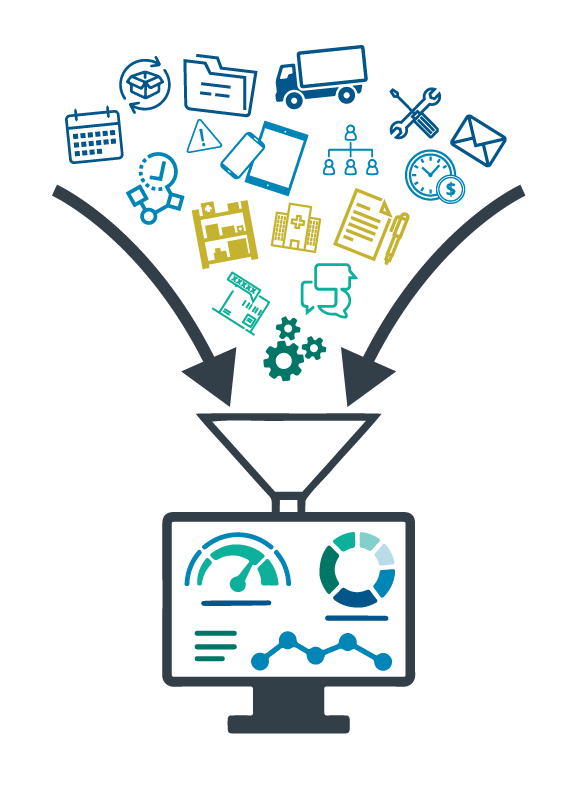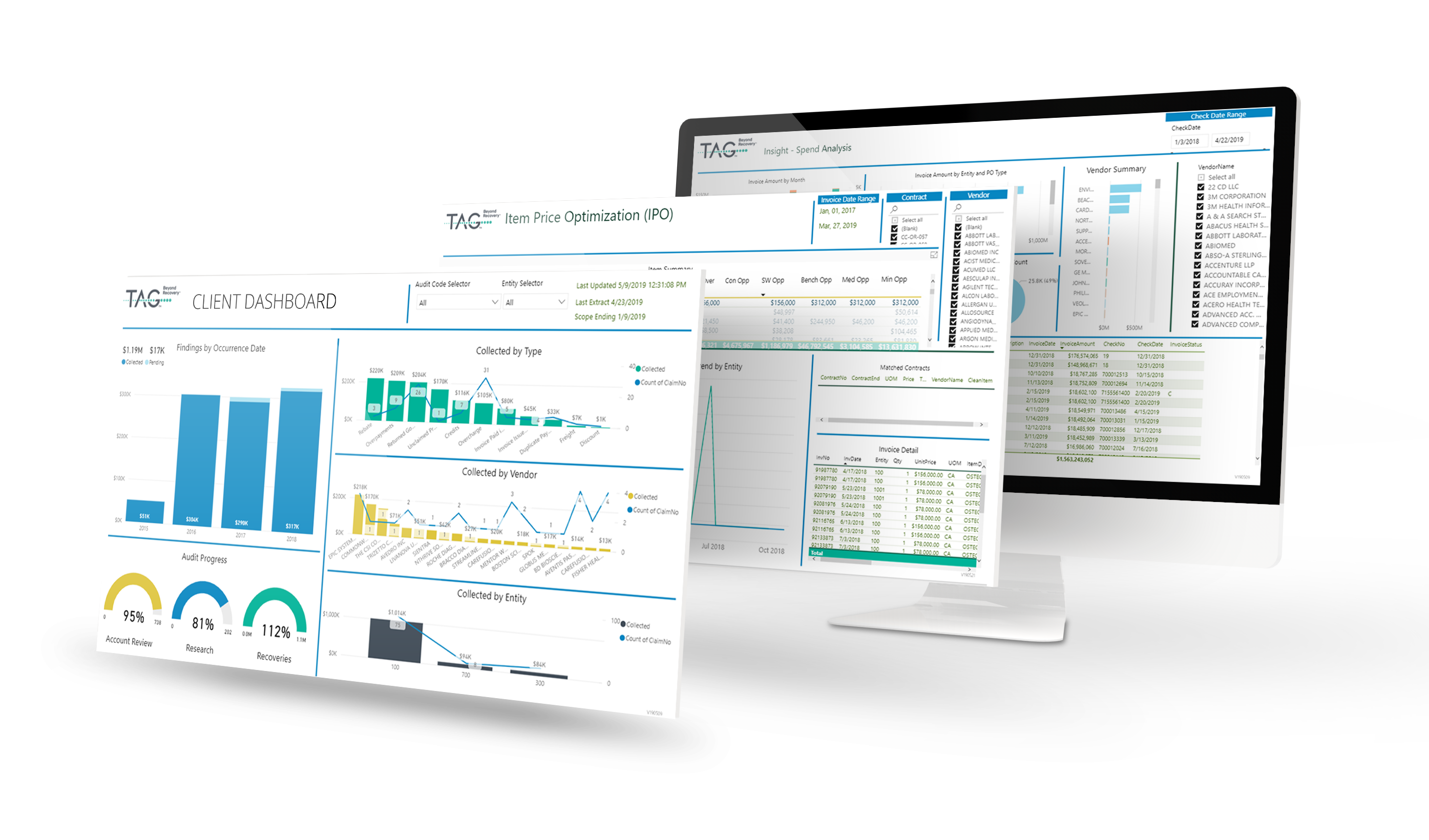
Navigating the Complexities of Your Health System’s Pharmaceutical Procurement
March 17, 2022
Why your Health System Needs a Contract Repository
May 17, 2022To keep up with the changing world and future world events such as the COVID-19 pandemic, health systems must adopt leading supply chain automation. Automation can ease workflows, bring insight into current operations, create resiliency, and future-proof healthcare’s supply chain.
Automate Supply Chain Data Infrastructure
Data is dispersed between several different supply chain systems including the EHR, ERP, inventory management, etc. To begin to gain insight into data from all of these systems, it must first be consolidated in one place, thus providing a single source of truth (SSOT) by use of automation.
Creating the proper infrastructure with an SSOT allows for health systems to understand their true cost of care and make improvements over time by lowering costs, reducing waste, and increasing revenue.
An SSOT also ensures point-of-care costs are easily and clearly captured and that revenue cycle management departments are able to maximize reimbursements. It can also aid procurement and contracting departments in ensuring the health system gets the best available pricing by automatically storing the dispersed data mentioned above.
Organizations must utilize scanning technology that allows item information to be captured from point-of-use through to the reimbursement process.
However, data must be standardized and cleansed before consolidating and the data needs to be maintained along the way. Hospitals must standardize master data to internationally recognized standards such as GTIN, UDI, HCPCS, UNSPSC, and GMDN. Without clear and accurate data, organizations will not be able to take advantage of automation.

,TAG TIP: Refresh master data automatically to guarantee accuracy at all times. When making changes to master data, utilizing an SSOT will push the change out to all relevant points of contact.
Robotics Process Automation (RPA)
Utilize Robotics Process Automation (RPA) to handle tedious administrative tasks, digitization of documents, and navigate the web of vendor contracts. RPA uses automated bots and software to take data from one application and paste it into another.
Examples of using RPA at health systems that reduce operational costs:
- Creating guidelines so that contracts are correctly administered on time.
- Ensuring accurate rebates are received for actual spend levels.
- Confirming correct prices are paid for products.
- Tracking inventory, such as gloves, needles, syringes, medicines, or PPE.
- Notification of changes in shipping schedules.
According to a study from McKinsey & Company, RPA in healthcare will generate between $350 billion and $410 billion in annual value by 2025.
P2P Automation
The procure to pay (P2P) ecosystem is as much Supply Chain’s domain as it is Accounts Payable’s (AP). That’s why automation throughout the P2P process can help both parties operate more efficiently and in harmony.
Areas for automation in P2P
Payment optimization - usually viewed as AP’s responsibility - can be enhanced by the supply chain. Combining efforts of both departments can lead to savings and streamlined financial data. In turn, payment data can be used to make buying decisions. For example, by automating P2P analytics to provide more insight, pay terms can be leveraged when negotiating contracts to reduce costs.

Automated P2P analytics provide real-time insight to empower AP and Supply Chain to gain real-time knowledge of:
- Alternate suppliers
- Days cash on hand
- Days to pay
- PO/Non-PO spend
- Days to deduct
- Payment options such as p-card, credit cards, third-party financing options
We provide customized reporting and visualization on P2P insights based on your spend data. Reach out to learn how we can enhance your P2P decision-making process with our insights today.
Automated matching processing reduces payment errors later in the P2P process. Utilizing RPA to pull purchase order (PO), goods received, and invoice data to determine a match indicating payment should be made. On the contrary, it indicates invoices that have missing or incorrect information that often stems from incorrect or absent PO data or wrong information on the invoice.
Data Cleansing and validation are essential to a successful P2P process and should be done before implementing any automation. For example, our Item and Vendor master cleanses ensure a health system’s data is correct before processing it through RPA and AI technology.
Predictive Analytics in Healthcare Supply Chain
Data exists everywhere in a health system. From clinical to supply chain, data is constantly consumed and created. To make sense of all of this information for decision-making purposes, automation is required and can aid in the visualization of what the data represents. Automated software is widely available and can be linked to organizations’ ERP systems.
We provide supply chain consulting services to best implement automation and predictive analytics aligned with your unique environment.
Combining a health system’s data with public health data enables Supply Chain to make more accurate and timelier decisions.
However, to produce even more powerful insight, predictive analytics powered by AI can be utilized for optimizing workflows, sending essential notifications, and forecasting cash flow.
Uses of predictive analytics in health system Supply Chain:
- Notification of supply shortages and backorders.
- Forecasting health systems’ supply needs based on current and projected patient loads.
- Forecasting needs based on world events and the effects on the global supply chain. For example, when the global availability of PPE left healthcare organizations scrambling to acquire baseline levels during the COVID-19 pandemic.
- Reduce waste by knowing what products to order and when they should be ordered.
- Eliminate systemic gaps like incorrect ordering or frequently returned items.
- Insight into surges and lulls in product usage to aid in future contract and pricing negotiations.
Preference Card Standardization
Health systems must consider the advantages and efficiencies gained by electronically managing their physician preference cards. Standardization of preference cards drives cost savings from procurement and inventory management. Software tools are available to manage the standardization but are also available through suppliers such as Cardinal Health’s Pack Manager.
Not only does e-management drive cost savings, but it also aligns both clinical, finance, and supply chain teams. When combined with predictive analytics, teams can gain real-time insight into supply usage and availability, current pricing, returns, waste, and substitutions.
Advantages of electronic preference card management include:
- Driving more spend toward strategic vendor partners.
- Reducing variation when supply is in abundance.
- Understanding cost, quality, and outcomes.
- Integration into ERP and EHR systems.
- Elimination of duplicated or outdated preference cards so records are kept current.
- Reduction of manual changes in preference cards.
- Diminish friction between Clinical, Finance, and Supply Chain departments.



